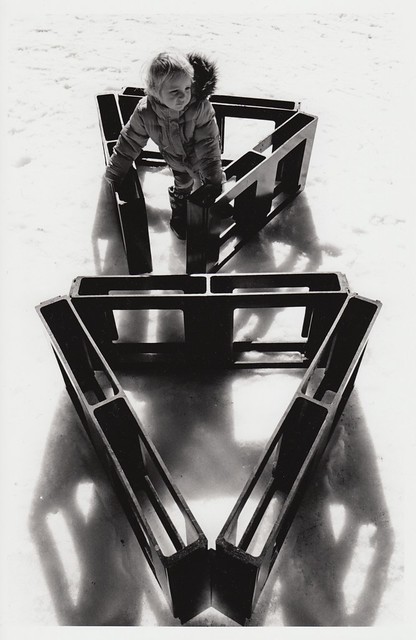Jolene inspects the Bose-Einstein condensate nacelles for heat fractures while the rest of Team Sicore prepares for an icy low-friction descent.
A Bose–Einstein condensate (BEC) is a state of matter of a dilute gas of bosons cooled to temperatures very near absolute zero (0 K or −273.15 °C[1]). Under such conditions, a large fraction of the bosons occupy the lowest quantum state, at which point quantum effects become apparent on a macroscopic scale. These effects are called macroscopic quantum phenomena.
Compared to more commonly encountered states of matter, Bose–Einstein condensates are extremely fragile. The slightest interaction with the outside world can be enough to warm them past the condensation threshold, eliminating their interesting properties and forming a normal gas.[citation needed]
Nevertheless, they have proven useful in exploring a wide range of questions in fundamental physics, and the years since the initial discoveries by the JILA and MIT groups have seen an explosion in experimental and theoretical activity. Examples include experiments that have demonstrated interference between condensates due to wave–particle duality,[21] the study of superfluidity and quantized vortices, the creation of bright matter wave solitons from Bose condensates confined to one dimension, and the slowing of light pulses to very low speeds using electromagnetically induced transparency.[22] Vortices in Bose–Einstein condensates are also currently the subject of analogue gravity research, studying the possibility of modeling black holes and their related phenomena in such environments in the lab. Experimentalists have also realized “optical lattices“, where the interference pattern from overlapping lasers provides a periodic potential for the condensate. These have been used to explore the transition between a superfluid and a Mott insulator,[23] and may be useful in studying Bose–Einstein condensation in fewer than three dimensions, for example the Tonks–Girardeau gas.
In 1999, Danish physicist Lene Vestergaard Hau led a team from Harvard University which succeeded in slowing a beam of light to about 17 metres per second[clarification needed]. She was able to achieve this by using a superfluid.[26] Hau and her associates at Harvard University have since successfully made a group of condensate atoms recoil from a “light pulse” such that they recorded the light’s phase and amplitude, which was recovered by a second nearby condensate, by what they term “slow-light-mediated atomic matter-wave amplification” using Bose–Einstein condensates: details of the experiment are discussed in an article in the journal Nature, 8 February 2007.[27]
